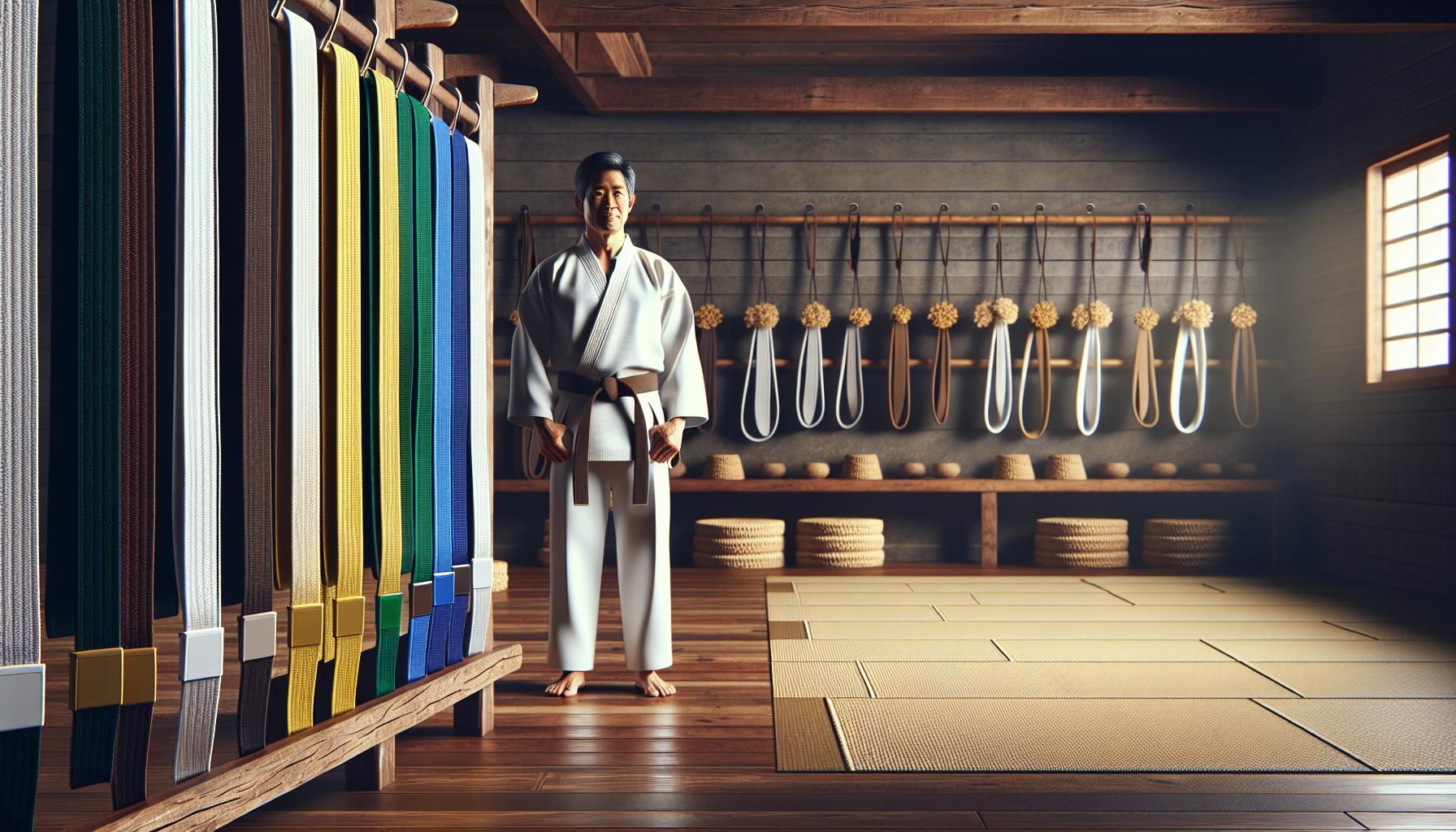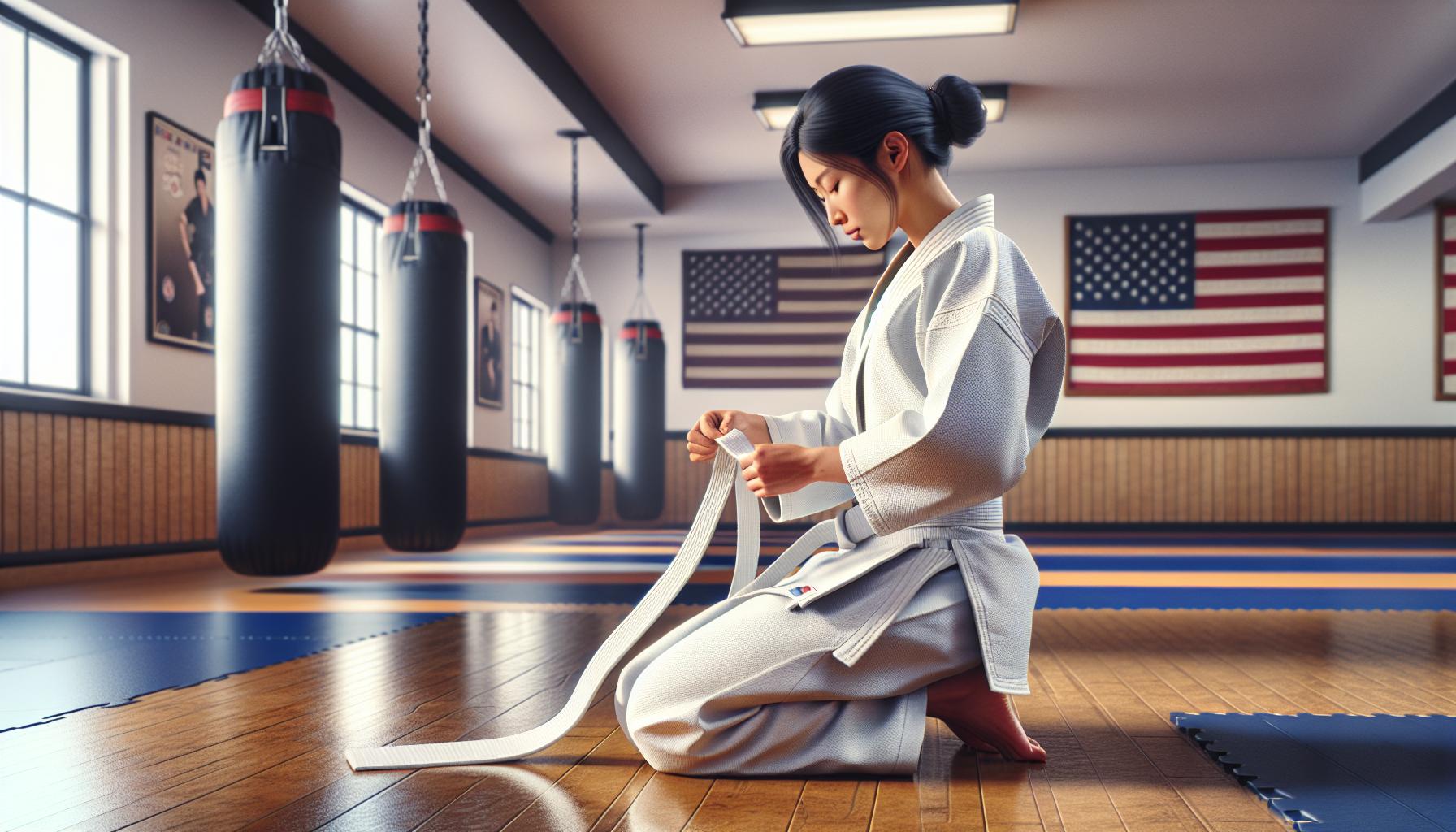
How to Tie a Martial Arts Belt: Step-by-Step Guide for Beginners and Experts
Tying a martial arts belt might seem like a simple task, but it carries significant meaning in the practice of martial arts. This ritual not only symbolizes your rank and dedication but also serves as a reminder of your journey and commitment to the discipline. Whether you’re a beginner or a seasoned practitioner, mastering this skill is essential.
Key Takeaways
- Symbol of Commitment: Tying a martial arts belt represents your rank and dedication, emphasizing your journey and discipline within the martial arts community.
- Daily Ritual: The act of tying your belt reinforces focus, respect, and perseverance, serving as a meaningful start to training sessions.
- Belt Color Significance: Different belt colors indicate various skill levels, with each hue embodying specific achievements and hard work across different martial arts styles.
- Mastering the Technique: Properly tying your belt boosts your readiness for practice and reflects attention to detail and a commitment to continuous improvement.
- Common Mistakes to Avoid: Ensure the right belt length, locate the center correctly, wrap smoothly, form a solid knot, and prioritize adjustments for an effective tie.
- Cultural Connection: Tying your belt connects you to the traditions of martial arts, honoring those who trained before you while fostering a sense of belonging.
Importance Of Tying A Martial Arts Belt
Tying a martial arts belt carries significant meaning beyond its functional purpose. It symbolizes one’s rank and dedication, representing the practitioner’s journey within the martial arts discipline. Each belt color signifies different skill levels, with specific codes that reflect hard work and achievement.
Tying the belt also serves as a daily ritual that instills discipline. Preparing for each training session starts with this simple act, reinforcing focus and commitment. This routine reminds me of the principles I strive to embody, such as respect, perseverance, and humility.
For beginners, mastering the technique of tying the belt fosters a sense of belonging. It connects new practitioners to the traditions of martial arts, honoring those who trained before. For experienced practitioners, properly tying the belt signifies readiness and respect for the art. It’s a way to demonstrate attention to detail and dedication to continuous improvement.
Ultimately, the act of tying a martial arts belt aligns with the core values of martial arts—discipline, respect, and perseverance. Committing to this practice enhances my experience and reinforces my connection to the martial arts community.
Types Of Martial Arts Belts

Martial arts belts come in various types, each serving a specific purpose. The colors and styles often represent a systematic way to denote proficiency and commitment.
Color-Coded Systems
Color-coded systems typically include a range of colors such as white, yellow, green, blue, brown, and black. Each color signifies distinct levels of skill and achievement. For example, a white belt represents a beginner, while a black belt denotes advanced proficiency. Some martial arts schools incorporate additional colors to further differentiate ranks. Colors may also vary across different styles, emphasizing unique traditions and philosophies.
Different Styles
Different martial arts styles utilize distinct belt systems. For instance, Taekwondo features a structured progression often starting with a white belt and advancing through colored belts to black. In contrast, Brazilian Jiu-Jitsu employs a more fluid system, where practitioners achieve stripes on their belts as they progress. Karate often includes several additional colors to signify progress. Each style has its significance, reflecting the underlying values and training methods specific to that martial art.
Step-By-Step Guide On How To Tie A Martial Arts Belt

Tying a martial arts belt correctly enhances both appearance and functionality. This guide walks through the essential steps for mastering this important ritual.
Preparing The Belt
- Choose the Right Belt: Select a belt that corresponds to my martial art’s ranking system. Ensure the color aligns with my current level.
- Fold the Belt: Start with the belt laid flat. Fold it in half to find the center, which acts as a reference point during tying.
- Check Length: Make sure the belt’s length is appropriate. It should wrap around my waist twice, with enough length to tie comfortably.
Positioning The Belt
- Find the Center: Position the center of the belt at my navel, ensuring it sits comfortably.
- Wrap the Belt: Take one end of the belt and wrap it around my waist, moving it from my back to my front.
- Cross the Ends: Bring the other end around, crossing it over the first end, creating an “X” shape in front of my body.
- Tuck One End: Take the end on top, wrap it under the other end, and pull it through the loop created. This forms the first part of the knot.
- Create a Secure Loop: Pull both ends of the belt to tighten the knot. Ensure it feels snug but not overly tight.
- Finish the Knot: Take the end that is now on top, loop it over and tuck it under the first part of the knot. Pull to secure the final knot firmly.
By following these steps, I maintain the integrity and symbolism of my martial arts journey. Tying the belt correctly reflects my respect for the art and its traditions.
Common Mistakes To Avoid

I recognize common mistakes that can hinder proper belt-tying techniques. Avoiding these errors ensures that I uphold the tradition and significance of wearing my belt correctly.
- Not Choosing the Right Length: I double-check that my belt’s length is appropriate for my waist size. A belt that’s too long or short makes it difficult to tie securely and maintain the intended look.
- Overlooking the Center Position: I always locate the center of the belt before starting. Failing to do this can lead to uneven wraps and an awkward knot, which may not hold well during practice.
- Wrapping Inefficiently: I ensure that each wrap around my waist is smooth and even. Failing to do this can create bulkiness and discomfort, making movements less fluid during training.
- Incorrect Knot Formation: I focus on forming a solid knot with both ends of the belt. Skipping this step or tying a loose knot leads to the belt coming undone, which can disrupt my concentration.
- Neglecting the Left Side First: I remember to place the left side of my belt over the right when tying. This is crucial as it aligns with traditional practices and keeps the knot secure.
- Ignoring Adjustments: I regularly adjust my belt throughout training if it becomes loose. This ensures it stays in place and maintains its purpose as a symbol of my dedication.
- Rushing the Process: I take my time when tying my belt instead of hurrying through it. Quick, careless movements often lead to mistakes that I might overlook, compromising the integrity of my tie.
By avoiding these common mistakes, I enhance my practice and demonstrate respect for the martial arts tradition.
Conclusion
Tying a martial arts belt goes beyond mere functionality. It’s a daily ritual that connects me to my journey and the values of discipline and respect. Each time I wrap that belt around my waist I’m reminded of my progress and the hard work that’s brought me to this point.
Whether I’m a beginner or a seasoned practitioner the way I tie my belt signifies my readiness and commitment to the art. By mastering this essential skill I not only enhance my practice but also honor the traditions that have shaped my martial arts experience. Embracing this simple yet profound act enriches my connection to the martial arts community and reinforces my dedication to continuous growth.



